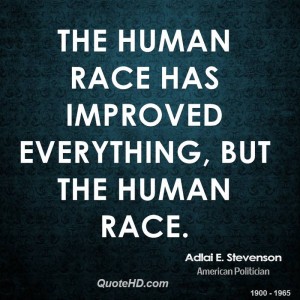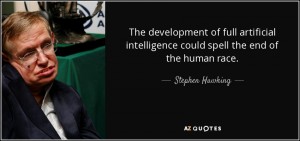
Last week, I tapped into the Wisdom of the Working with SMEs Crowd for advice on how to work with experts who are non-US natives and non-English native speakers. Several of you stepped up to serve! In our first-ever guest blog post, Mr. Martin E. Gilligan Jr. generously shares a wealth of international experience with us. Should you care to contact Mr. Gilligan directly, his contact information is below his blog.
Thanks to all of you for your readership and engagement.
Guest Blogger: Martin E. Gilligan, Jr.
Since I got my first foreign sales assignment purely by unfortunate circumstances (for me, the company, and the CEO) – I didn’t even have a Passport, only spoke “pigeon Spanish,” and only had US/Canada sales experience. BUT, I ended up getting 102 country pins on my travel map and setting sales records in the ten+ years I was responsible for sales/marketing of boilers, HVAC, and Alternative Fuel systems – this was selling capital goods w/ value of $250,000 to $5,000,000 each. Following that, as a consultant, I used to do two to four US / Foreign licenses and/or strategic relationship agreements per year and still do one or two a year for my long-term clients.
In dealing with foreign training, selling, and technical support I learned (the hard way) the following – do it or you’ll pay for it later.
1. Research the country – music, food, culture, customs. Luckily, I was so terrified of my first trip (to Peru for the fish meal industry) I did this without having to be told. Absolutely mandatory for anyone traveling to do the actual teaching/service work and/or supervising such effort – whether or not he/she is on the trip or does it by text/e-mail or Skype from the home office. It can avoid a LOT of “foot-in-mouth” problems. The goal for each of your team members is to come out of the meeting or training session with at least one good personal relationship on the other side. You do that by eating, drinking, socializing with people on their terms, not yours. I always stayed in a local business hotel (not a big US chain) that usually didn’t speak English, but my host (customer, sales rep, distributor) took care of me. You don’t have to speak the language to enjoy a great meal, listen to good music, or watch local happenings or a game with the other person’s kids. These experiences create “bonding” connections which may save the day when you are in deep-doo-doo and need a favor, or when someone is being stubborn or thick-headed and you need advice on how to break the logjam. The other person realizes that it works that way for him/her too so it is not unfair to either party.
2. If you have access to a native language speaker in your industry for that specific country, use them to the hilt. If you don’t, do the research to find a good, competent (in your industry) professional translator. The American Embassy and your Industry Trade Journals that publish in that country are good places to start looking. Set your schedule so that you have more than a couple of hours alone with the translator to go over what you intend to present and the key points you want to make. It may cost you extra dollars, but you can’t imagine the cost and lost sales and implementation problems a wrong translation can cause, which will usually come back to your account – regardless of what your English Terms & Conditions say. DO NOT use university professors, relatives, or foreign customer employees unless you are sure that they understand the business or subject matter you are going to present. Company employees and professors will “color” their translation with their own opinions and prejudices (especially if they know that you don’t have a clue what they are saying). These comments are especially true of printed or recorded “leave-behind” materials. They should be vetted by someone who will understand something that will come across as “wrong,” “stupid,” “prejudiced,” or “insulting.” The classic example is Chevrolet naming their South American export car NOVA which roughly translates into “no go” or “does not go.” Or the Mexican Restaurant Chi-Chis which is a crude slang term for breasts in Mexico and Central America.
3. The English as a second language audience is a separate (and often more difficult) case. Many times the so-called English speaking person does not dare to admit that he/she did not understand what was presented due to their status within the company as knowing English. The answer here is the same as # 5 below. Secondly, the English as a second language person understands English in a very specific, exact “dictionary” manner so avoid slang or technical jargon and use simple terms.
4. When scheduling the program, double or triple your normal presentation and break time. After each topic change, stop for questions and to repeat segments that were difficult to understand. Unless you have been the recipient of an incomprehensible briefing or program in a foreign language with English subtitles or through a translator, you can’t imaging how exhausting it can be – particularly when someone’s company or department or personal success depends on getting it right. Plan on at least one “pure” follow-up session to make sure that the basics “took” and monitor implementation on at least twice the normal frequency as in an English-speaking country.
5. When preparing written documents or brochures/posters, OR briefing charts/slides, OR scripts for spoken presentation (and there should ALWAYS be a script or detail notes for any spoken briefing in case you have to go back and repeat – prove you made – a specific point) always use very basic and simple English language and sentence construction. Make it easy to translate and/or be understood by the second language person. Many times, to make an important point, you need to repeat it several times using different words and/or illustrations to make the point. NEVER use slang or highly technical jargon without multiple explanations about what it means.
6. If at all possible, especially under license implementation situations, bring a key person from the receiving group to a good example situation in the US or some other English-speaking country so that you have someone in the room who understands most of what you are trying to get across to the others, but don’t let them make the briefing unless he/she has actually run your operation in the US.
This sounds like a lot of work and expense, and it is; but it pales to insignificance when compared with re-doing, repairing, re-training, undoing and re-doing stuff with a 10,000+ mile one-way trip for each session that is not going to be paid by the licensee or customer. As the saying goes: “You can pay now or you can pay later, but you will pay!!”
Martin E. Gilligan, Jr., is the Owner & Principal Consultant at MARTIN & ASSOCIATES “Who you SHOULD see before you HAVE TO SEE an attorney”. Mr. Gilligan can be reached directly at martinejr@comcast.net. For more information, visit his website at http://www.martingilliganconsulting.com







